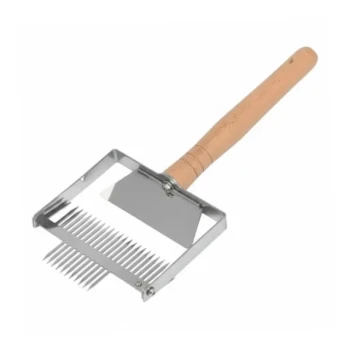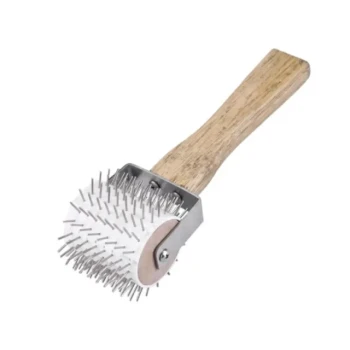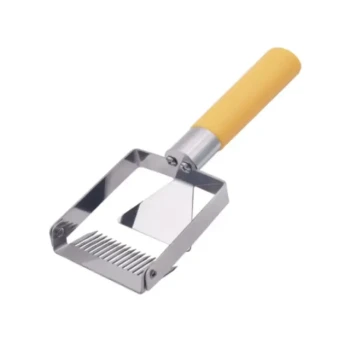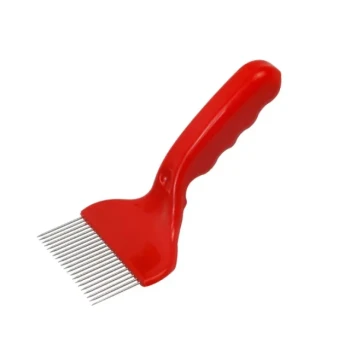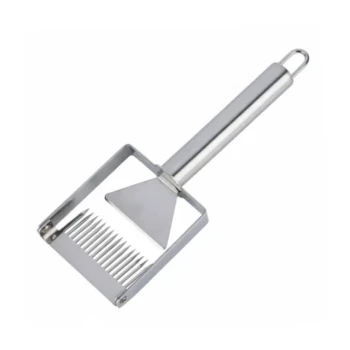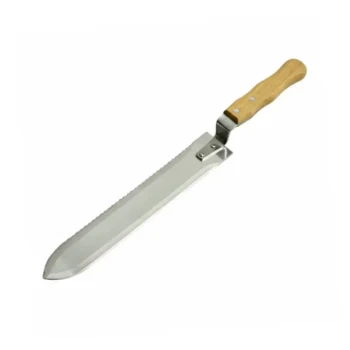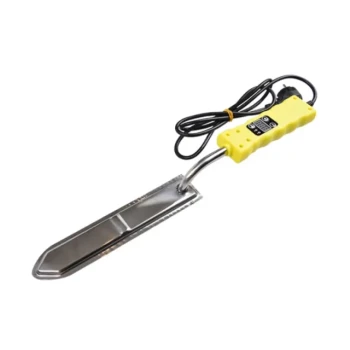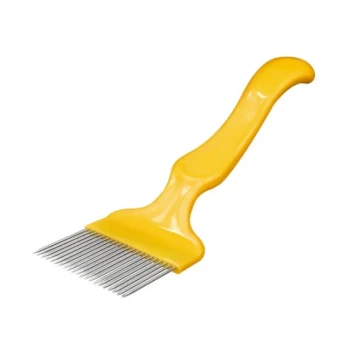To maximize honey yield during uncapping, you must combine the right tool for your specific comb with a meticulous technique and an efficient workflow. The goal is to remove every wax capping while ensuring that all dripping honey—from the frames, the cappings, and your tools—is collected in an uncapping tank before the frames ever reach the extractor.
The secret to a higher honey yield isn't found in a single tool, but in a systematic process designed to capture every possible drop. An organized workspace and patience in letting honey drip from cappings are just as crucial as the uncapping itself.
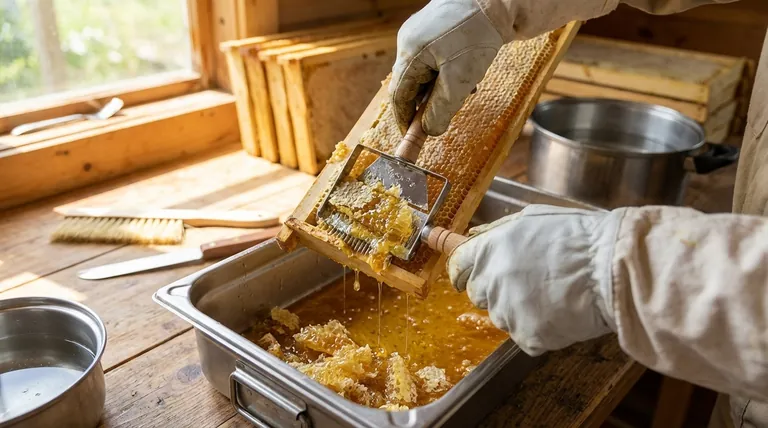
Choosing the Right Uncapping Tool
Your choice of tool directly impacts both your speed and your thoroughness. The ideal tool cleanly slices off the wax cappings without damaging the comb structure or leaving honey behind.
The Electric Hot Knife: For Speed and Ease
An electric uncapping knife contains a heating element, often with a thermostat, that melts through the beeswax effortlessly. This makes it a popular choice for small- to medium-sized operations.
The consistent heat allows for a smooth, fast cut, reducing the physical effort required and speeding up the entire process.
The Manual Cold Knife: For Control and Cost
A cold knife is a simple, sharp, serrated blade. It is a less expensive and traditional alternative that offers excellent control over the uncapping depth.
To make cutting easier, many beekeepers keep a tall pot of very hot water nearby to dip and heat the blade between passes.
Other Tools for Uneven Combs
For frames where the comb is not drawn out evenly, a simple knife cut may miss low spots.
In these cases, an uncapping roller or a scratcher (a fork-like tool) is essential for puncturing the remaining cappings and ensuring no honey gets trapped in the cells.
Optimizing Your Uncapping Workflow
An efficient process prevents waste and saves time. How you set up your space is as important as how you handle the frames.
Prepare Your Workspace for Efficiency
Your uncapping station should be a large, easily cleaned surface, like a stainless-steel table. Arrange your tools, uncapping tank, and a rack for holding frames all within easy reach.
Crucially, position this station as close as possible to your honey extractor. This minimizes the distance you have to carry sticky, dripping frames, reducing potential mess and honey loss.
Work Away From the Hive
Always conduct your honey extraction at a significant distance from your hives. The powerful aroma of honey and exposed comb can quickly attract bees and may trigger robbing behavior or agitation.
Use an Uncapping Tank to Capture Drips
An uncapping tank is the centerpiece of a zero-waste workflow. It serves two functions: it provides a stable platform to rest the frame on while you work, and its screened bottom allows all dripping honey and sliced cappings to fall into a collection basin.
Understanding the Trade-offs
Every method comes with considerations. Understanding them helps you make an informed decision based on your priorities.
Speed vs. Precision
An electric hot knife is undeniably faster. However, a cold knife can offer more tactile feedback and precision, which some beekeepers prefer for carefully preserving the underlying comb.
Cost vs. Convenience
Electric knives are a larger upfront investment but significantly reduce the time and labor of uncapping. Cold knives are budget-friendly but require more physical effort and the extra step of heating them in water.
Heat and Honey Quality
While modern, thermostatically controlled hot knives are designed to be safe, an improperly used or overly hot knife could theoretically alter the delicate enzymes and aroma of the honey. This is a minimal risk but one that purists often consider.
Making the Right Choice for Your Goal
Your ideal method depends on the scale of your operation, your budget, and your personal preference for the hands-on process.
- If your primary focus is speed and ease for a small to medium harvest: An electric uncapping knife paired with an efficient tank setup is your most effective choice.
- If your primary focus is budget and you value hands-on control: A quality serrated cold knife, supplemented with a pot of hot water, is a reliable and time-tested solution.
- If you frequently deal with uneven combs: Regardless of your knife choice, supplementing with an uncapping scratcher or roller is necessary to avoid leaving honey behind.
By focusing on a deliberate process from tool selection to final collection, you ensure every precious drop of your hard-earned honey makes it into the jar.
Summary Table:
| Tool/Method | Best For | Key Benefit | Key Consideration |
|---|---|---|---|
| Electric Hot Knife | Small to medium operations | Fast, effortless uncapping | Higher upfront cost |
| Manual Cold Knife | Budget-conscious beekeepers | Precise control, low cost | Requires more effort |
| Uncapping Scratcher/Roller | Uneven combs | Ensures no honey is left behind | Used as a supplement to knives |
| Uncapping Tank | All operations | Captures drips, reduces waste | Essential for zero-loss workflow |
Ready to maximize your honey yield with professional-grade equipment?
At HONESTBEE, we supply commercial apiaries and beekeeping equipment distributors with high-performance, wholesale-focused uncapping tools and honey extraction systems. Our electric knives, cold knives, and uncapping tanks are designed to help you work faster, cleaner, and more profitably.
Contact us today to discuss your needs and discover how our durable, efficient solutions can help you capture every drop of honey and increase your operational ROI.
Visual Guide
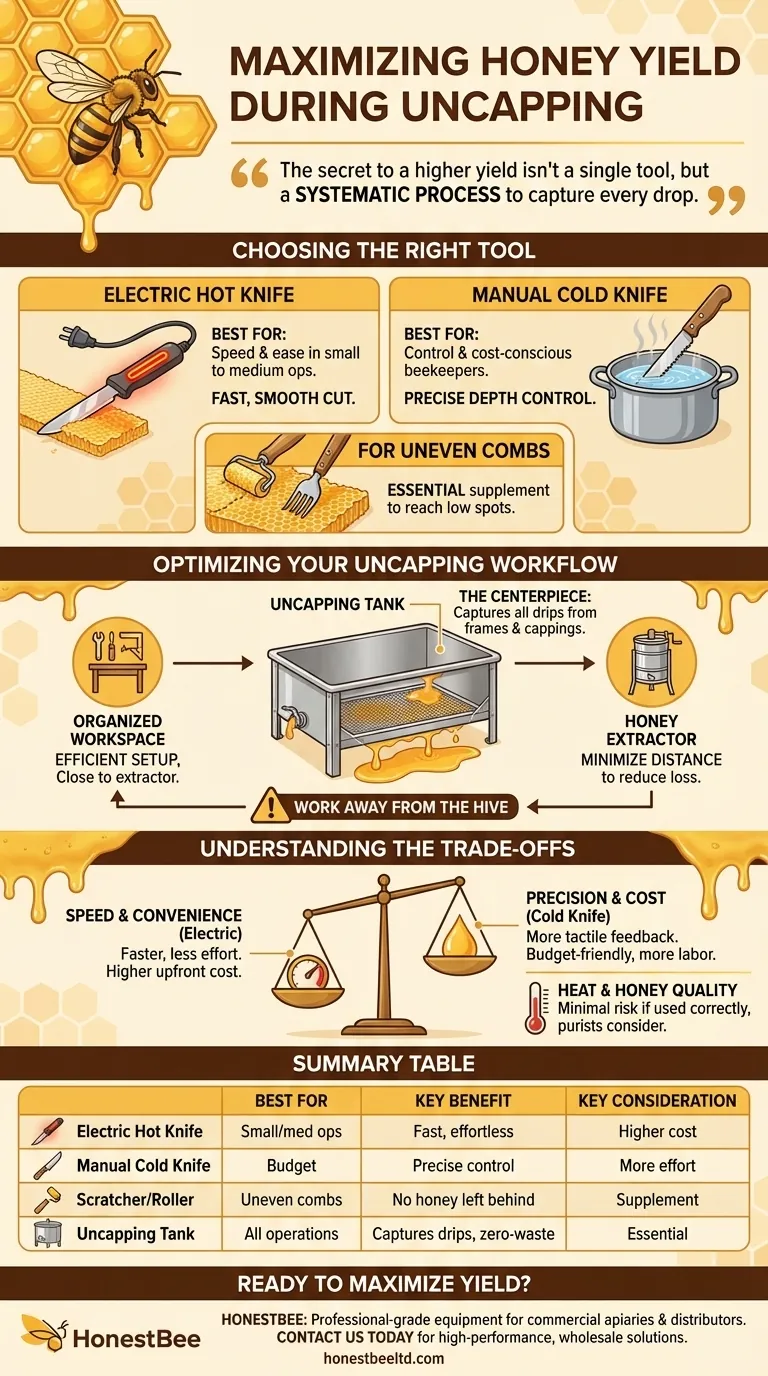
Related Products
- Stainless Steel Double Sided Honey Uncapping Fork with Scraper
- Professional Honey Uncapping Roller for Efficient Harvesting
- Stainless Steel Pivoting Honey Uncapping Fork with Plastic Handle
- Professional Wide Head Honey Uncapping Fork for Beekeeping
- All-Stainless Steel Pivoting Honey Uncapping Fork for Beekeeping
People Also Ask
- Why are my bees not capping honey? Understand the Key to Perfect Honey Ripening
- What equipment is needed for honey extraction? The Essential Gear for Every Beekeeper
- How should honeycombs be prepared for honey extraction? A Step-by-Step Guide to a Clean Harvest
- What is an uncapping knife? Choose the Right Tool for Your Beekeeping Scale
- How does an uncapping fork work, and what are its benefits? Achieve Precision Unsealing for Your Honey Frames
